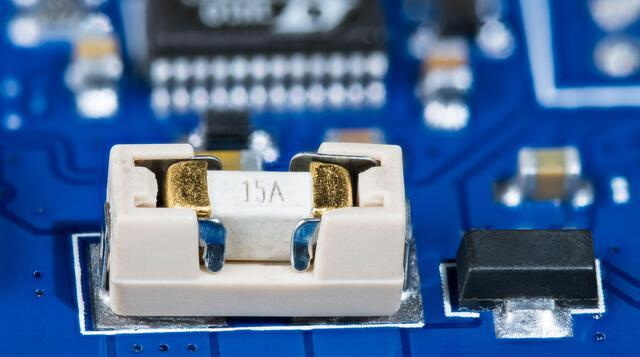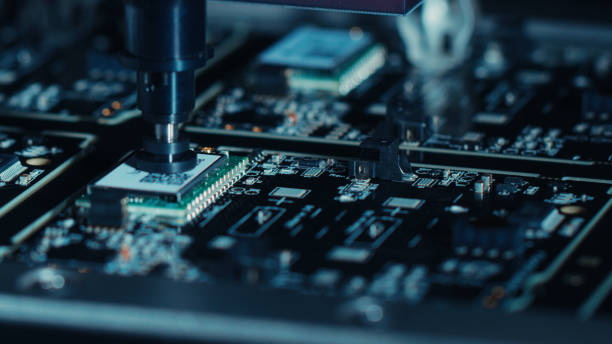Content Menu
● Understanding SMT Nozzles
>> Types of SMT Nozzles
>> Importance of Nozzle Material
● Selecting the Right Nozzle
>> Factors to Consider
● Optimizing Pick-Up Parameters
>> Vacuum Pressure
>> Nozzle Speed
>> Dwell Time
● Regular Maintenance and Cleaning
>> Cleaning Techniques
● Implementing Advanced Technologies
>> Real-Time Monitoring
● Training Operators
>> Importance of Operator Training
>> Continuous Education
● Monitoring Nozzle Performance
>> Analyzing Performance Data
● Troubleshooting Common Issues
● Future Trends in SMT Nozzle Technology
● Conclusion
● FAQ
>> 1. What are SMT nozzles used for?
>> 2. How do you select the right SMT nozzle?
>> 3. What maintenance is required for SMT nozzles?
>> 4. How can advanced technologies improve SMT nozzle efficiency?
>> 5. Why is optimizing pick-up parameters important?
Surface Mount Technology (SMT) nozzles are critical components in the electronics manufacturing process. Optimizing these nozzles can significantly enhance the efficiency and accuracy of SMT machines, leading to improved production outcomes. This article explores various strategies to optimize SMT nozzles for maximum efficiency.

Understanding SMT Nozzles
SMT nozzles are used in pick-and-place machines to handle and place electronic components onto printed circuit boards (PCBs). The efficiency of these nozzles directly impacts the speed and accuracy of the assembly process. Understanding the different types of nozzles and their specific applications is the first step toward optimization.
Types of SMT Nozzles
There are various types of SMT nozzles, each designed for specific tasks. Standard nozzles are used for general-purpose applications, while specialized nozzles are designed for handling delicate or uniquely shaped components. Understanding the differences between these nozzles can help in selecting the right one for your needs.
- Standard Nozzles: These are versatile and can handle a wide range of component sizes and shapes, making them suitable for most applications.
- Vacuum Nozzles: Designed specifically to create a vacuum that securely holds components during pick-up, these nozzles are essential for handling small or lightweight parts.
- Flat Nozzles: These are used for larger components that require a broader surface area for effective handling.
- Custom Nozzles: Tailored to specific component shapes or sizes, custom nozzles can enhance performance in specialized applications.
Importance of Nozzle Material
The material of the nozzle can affect its durability and performance. Common materials include stainless steel, ceramic, and plastic. Each material has its advantages and disadvantages, and the choice depends on the specific requirements of the manufacturing process.
- Stainless Steel: Known for its strength and resistance to corrosion, stainless steel is commonly used in environments where durability is essential.
- Ceramic: Offers excellent wear resistance and is ideal for high-temperature applications but can be more brittle than other materials.
- Plastic: Lightweight and cost-effective, plastic nozzles are suitable for low-stress applications but may not withstand harsh conditions.
Selecting the Right Nozzle
Choosing the appropriate nozzle for specific components is crucial. Different components require different nozzle sizes and shapes to ensure proper handling and placement. Using the correct nozzle minimizes errors and enhances efficiency. For instance, larger components may require nozzles with wider openings, while smaller components need precision nozzles.
Factors to Consider
When selecting a nozzle, consider factors such as component size, shape, weight, and surface finish. Additionally, the type of solder paste and the specific requirements of the PCB design can influence nozzle selection.
- Component Size: Larger components may necessitate a wider nozzle opening to ensure secure handling.
- Component Shape: Irregularly shaped components may require custom-designed nozzles to prevent slippage during placement.
- Weight: Heavier components need stronger vacuum forces to ensure they are held securely without risk of dropping.
Optimizing Pick-Up Parameters
Adjusting pick-up parameters such as vacuum pressure, nozzle speed, and dwell time can improve component pick-up reliability. Fine-tuning these parameters reduces the risk of component damage and misplacement. It is essential to regularly review and adjust these settings to accommodate changes in component types and manufacturing conditions.
Vacuum Pressure
The vacuum pressure must be sufficient to hold components securely without causing damage. Too much pressure can damage delicate components, while too little can result in misplacement.
- Testing Vacuum Levels: Regular testing of vacuum levels ensures that they remain within optimal ranges for different component types.
Nozzle Speed
The speed at which the nozzle moves can affect the accuracy of component placement. Faster speeds may increase throughput but can also lead to errors if not carefully controlled.
- Balancing Speed with Accuracy: Finding a balance between speed and accuracy is crucial; operators should monitor performance metrics closely to adjust speeds as needed.
Dwell Time
Dwell time refers to how long the nozzle maintains contact with a component before lifting it away. Adjusting dwell time can help improve pick-up reliability by allowing more time for vacuum suction to take effect.

Regular Maintenance and Cleaning
Maintaining and cleaning SMT nozzles regularly is essential for their longevity and performance. Techniques such as manual wiping, ultrasonic cleaning, and using specialized cleaning solutions help preserve nozzle integrity. Regular maintenance prevents the buildup of debris and ensures consistent performance.
Cleaning Techniques
Manual cleaning involves wiping the nozzle with a soft cloth to remove surface debris. Ultrasonic cleaning uses high-frequency sound waves to remove particles from hard-to-reach areas. Specialized cleaning solutions can dissolve stubborn residues without damaging the nozzle.
- Routine Cleaning Schedule: Establishing a routine cleaning schedule based on production volume helps maintain optimal performance levels.
Implementing Advanced Technologies
Incorporating advanced technologies like automated nozzle changers and real-time monitoring systems can further optimize nozzle performance. These technologies enhance flexibility and adaptability in handling various components. Automated systems can quickly switch between different nozzle types, reducing downtime and increasing efficiency.
Real-Time Monitoring
Real-time monitoring systems provide valuable data on nozzle performance, allowing for immediate adjustments to optimize efficiency. These systems can detect issues such as nozzle wear or blockages, enabling proactive maintenance.
- Data Analytics: Utilizing data analytics from monitoring systems helps identify patterns that could indicate potential problems before they impact production.
Training Operators
Training operators on proper handling techniques is vital for maximizing SMT nozzle efficiency. Well-trained operators can identify potential issues early on, perform necessary adjustments, and maintain optimal machine settings throughout production runs.
Importance of Operator Training
Effective training programs should cover:
- Nozzle Handling: Proper techniques for loading, unloading, and changing nozzles.
- Maintenance Procedures: Regular cleaning schedules and inspection routines.
- Error Diagnosis: Identifying common problems related to nozzle performance.
Continuous Education
Encouraging continuous education through workshops or online training modules keeps operators updated on best practices and new technologies in SMT manufacturing.
Monitoring Nozzle Performance
Continuous monitoring of nozzle performance metrics helps identify trends that may indicate a need for maintenance or replacement. Key performance indicators (KPIs) include:
- Placement Accuracy: Measuring how accurately components are placed.
- Cycle Time: The time taken for each pick-and-place operation.
- Failure Rates: Tracking instances of misplacement or component damage.
Analyzing Performance Data
Regular analysis of performance data allows manufacturers to make informed decisions about when to replace or repair nozzles based on usage patterns rather than relying solely on scheduled maintenance intervals.
Troubleshooting Common Issues
Despite best efforts at optimization, issues with SMT nozzles may still arise. Common problems include:
- Component Misalignment: Often caused by incorrect vacuum settings or worn-out nozzles.
- Inconsistent Pick-Up: Can be attributed to debris buildup or improper cleaning techniques.
- Damage During Placement: May result from excessive speed or incorrect dwell time settings.
Identifying these issues early through monitoring allows manufacturers to take corrective actions promptly.
Future Trends in SMT Nozzle Technology
As technology continues to evolve, several trends are emerging in SMT nozzle technology that could further enhance efficiency:
- Smart Nozzle Technology: Incorporating sensors into nozzles allows real-time feedback on performance metrics like temperature and wear levels.
- Adaptive Control Systems: These systems adjust parameters automatically based on real-time data inputs from production lines.
- Sustainability Practices: Innovations aimed at reducing waste during manufacturing processes are becoming increasingly important in modern production environments.
By staying abreast of these trends, manufacturers can ensure they remain competitive in an ever-evolving industry landscape.
Conclusion
Optimizing SMT nozzles is a multifaceted process that involves selecting the right nozzle, adjusting pick-up parameters, regular maintenance, leveraging advanced technologies, training operators effectively, continuously monitoring performance metrics, troubleshooting common issues, and staying informed about future trends. By focusing on these areas, manufacturers can achieve maximum efficiency in their SMT processes. Continuous improvement and adaptation to new technologies are key to maintaining a competitive edge in the electronics manufacturing industry.

FAQ
1. What are SMT nozzles used for?
SMT nozzles are used in pick-and-place machines to handle and place electronic components onto PCBs. They are essential for precise and efficient component placement.
2. How do you select the right SMT nozzle?
Selecting the right SMT nozzle involves considering the size, shape, weight, and surface finish of components being handled to ensure proper placement and minimize errors. It is important to match the nozzle to the specific requirements of the manufacturing process.
3. What maintenance is required for SMT nozzles?
Regular cleaning using manual wiping, ultrasonic cleaning, and specialized solutions is necessary to maintain SMT nozzles. Proper storage and handling also contribute to their longevity.
4. How can advanced technologies improve SMT nozzle efficiency?
Advanced technologies like automated nozzle changers and real-time monitoring systems enhance flexibility and performance in handling various components. These technologies allow for quick adjustments and proactive maintenance.
5. Why is optimizing pick-up parameters important?
Optimizing pick-up parameters such as vacuum pressure and nozzle speed improves component pick-up reliability while reducing damage risks. Proper parameter settings ensure consistent accuracy during component placement.




















